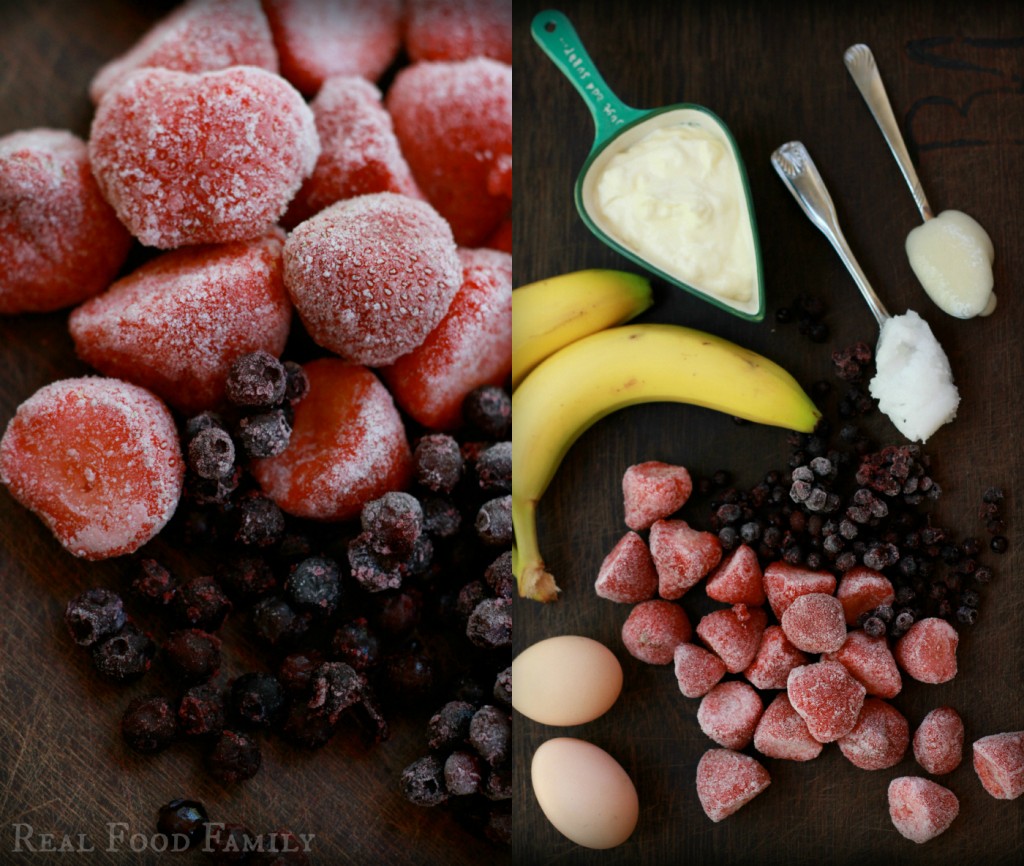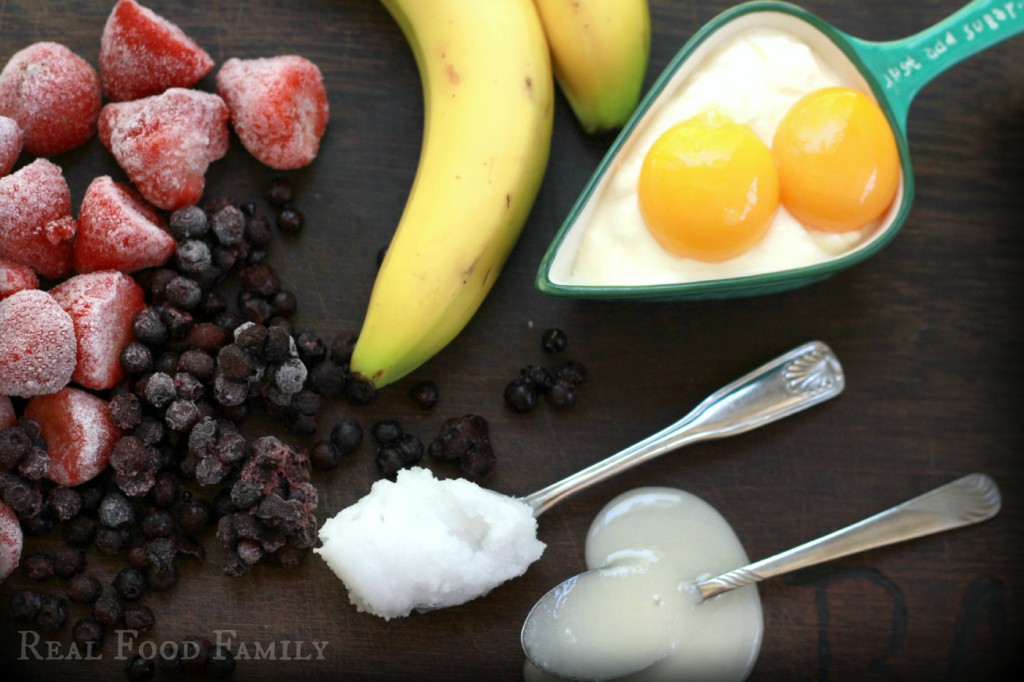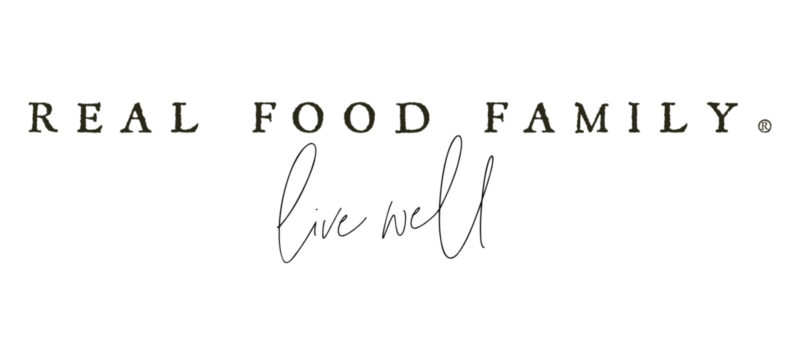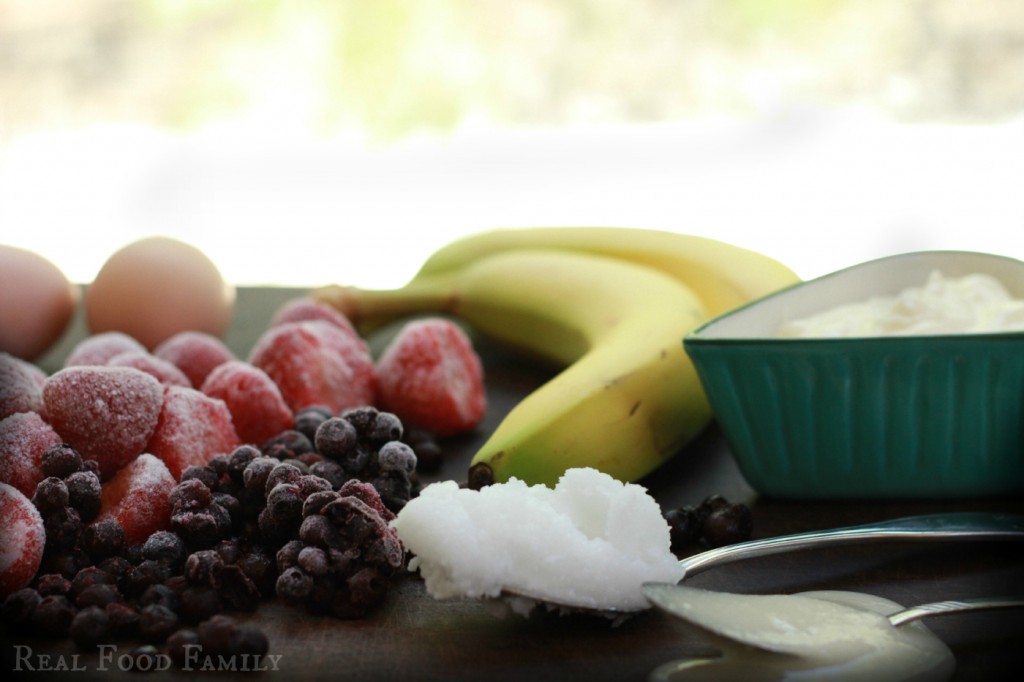Here is a recipe for a truly nutrient-dense whole food smoothie. I originally called it a “‘pregnancy” smoothie, but it’s our basic smoothie recipe we use for everyone in the family.
Whenever you see something labeled as a “pregnancy” recipe, you should consider it something you should eat- whether you are 3 years old or 90 years old, a man or a woman, pregnant or not.
I consider “pregnancy food” to be any nutrient-dense, nutritionally balanced, life-giving food. Isn’t that the kind of food we should all be eating?

Pregnancy and child-rearing is usually the time when mothers decide what nutritional rules they will create for their family…if any. The idea that whatever you put in your body is going determine the development and health of the growing life inside of you is quite a motivating factor for sticking with dietary rules. Typically mothers continue to focus on nutrition as their children grow older and it becomes a part of the family life.
My point is that your childhood nutritional brainwashing- good or bad- is most likely a result of the choices your mother made when she was pregnant with you (or preparing to raise you- however you got there).
So whether you’re pregnant or not, this smoothie is a perfect example of a nutritionally balanced, nutrient-dense meal or snack. I do recommend eating at meal-time only and snacking only if necessary, unless you are pregnant and need to be eating more often.


Why Should I Eat This?
Frozen Fruit
Fruit gives you a nice foundation of various vitamins, minerals and anti-oxidants…and they taste delicious. Make sure you are choosing organic fruit and avoiding toxic pesticides that are anything BUT healthy. Berries are especially laden with chemicals if they are not organic.
Whole Fat Raw Milk
Whole fat raw milk is full of fat-soluble vitamins like vitamin A, D, E and K, which are essential for immunity, cellular development, cardiovascular health, and almost every other area of health. Minerals in whole raw milk like potassium, calcium and magnesium are essential for bone development as well as supporting healthy muscle development and contractions…which is particularly good for those pesky pregnancy charlie horse cramps and especially for LABOR!
Why RAW milk?
Raw milk contains the enzymes needed to properly digest milk. Without those enzymes you might have difficulty digesting milk whether you realize it or not. (Hello, lactose intolerance!) The pasteurization process kills dangerous germs but also kills the enzymes needed to digest milk, and also most of the beneficial vitamins in the milk, leaving a dead dairy product that has little nutritional value as opposed to healthy raw milk. The key to safe, healthy raw milk is that it MUST come from healthy, grass-fed and pasture-raised cows to eliminate any risk of bacteria infection or other pathogens. There are many sources of safe raw milk in the United States from farmers who have pristinely clean and safe milk. Learn more about raw milk and find raw milk available near you through www.realmilk.com.
Why WHOLE milk?
If you can’t get raw milk, at least get organic whole-fat milk. To reduce the fat content in milk the industry separates the fat, dries and oxidizes it (BAD!!!!), then blasts it back into the milk. (It’s actually a very disgusting process.) Not only is oxidized fat the biggest contributor to cardiovascular and inflammatory diseases, but they have to process the milk more which means more pasteurization and contamination. The fat in milk is a healthy fat that keeps your energy up and keeps the fat-soluble vitamins stable and useful in your body. Besides, the research shows that low-fat dairy consumers are fatter than whole-fat dairy drinkers.
Whole Plain Cultured Yogurt
This has many of the same benefits as raw milk but also offers millions of beneficial bacteria that will promote healthy digestion and intestinal health, which in turn supports a healthy immune system. I choose whole fat yogurt for the same reason I choose whole fat milk. I choose plain yogurt because flavored yogurts have way too much sugar and added flavorings in them that are unnecessary and possibly very bad for you (corn syrup, artificial flavors, artificial colors, etc.). If you can’t find raw yogurt, find an organic whole-fat plain yogurt. You’ll know if it’s high quality if it is tart or sour (not in a bad way), which means it is cultured and therefore full of healthy bacteria, also called “probiotics”.
Raw Egg Yolks
Egg yolk supplies cholesterol needed for mental development as well as important sulphur-containing amino acids. Egg yolks from pasture-fed hens or hens raised on flax meal, fish meal or insects are also rich in the omega-3 long-chain fatty acids. Egg yolks from organically raised hens will virtually eliminate any risk of pathogens, but avoiding all raw egg whites will further eliminate any possible risk. Here are some links to help you understand the safety and benefits of raw egg yolks:
Why I’m Not Afraid of Salmonella, by Food Renegade
Are Raw Eggs Safe To Eat, by Kelly the Kitchen Kop
Why I Eat Raw Egg Yolks Every Day, by Living the Nourished Life
Raw Local Honey
If you can find raw local honey you will benefit from the possible allergy protection that will “immunize” you against local pollen allergens. There are many living enzymes in raw honey that are beneficial to your health as well. Real honey is a better sweetener than processed sugars, so at least use a form of real honey before using white sugar or syrup.
Virgin Coconut Oil
Coconut oil has been villainized as a bad “saturated fat” before the actual science proved the ancestral wisdom we already knew about saturated fat not contributing to heart disease. Coconut oil is a fantastic food that provides stable energy, has anti-bacterial, anti-fungal and anti-viral qualities, has shown to improve mental function and can even help you lose stubborn weight! This is a great article supporting the evidence for coconut oil.
Vital Proteins Collagen Peptides
This collagen peptides powder easily mixes into liquids without “gel-ing” and is from exclusively pasture raised cows. Collagen is the most abundant protein in the body and is a key constituent of all connective tissues. Collagen provides the infrastructure of the musculoskeletal system, essential for mobility. Peptides are short chain amino acids naturally derived from collagen protein. These natural peptides are highly bioavailable, digestible and soluble in cold water. The intake of collagen ensures the cohesion, elasticity and regeneration of skin, hair, tendon, cartilage, bones, and joints.
Optional: Greens powders
Smoothies are a fantastic way to add a ton of superfood boosts into the diet, included different vegetable or “green” powders. Here is a link to a selection of different green powder options that are top quality and a wonderful addition to smoothies.
To Make The Smoothies…
Half-fill a blender with frozen fruit and enough milk to almost cover the fruit. Blend until smooth. Add 2-3 raw egg yolks, 1/2-1 cup yogurt, 2-3 tablespoons virgin coconut oil, and 1-2 tablespoons raw honey, 2-3 scoops of collagen peptides and a tablespoon or two of greens powder, then blend until smooth. Enjoy right away!


